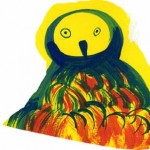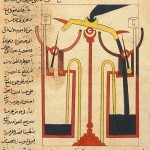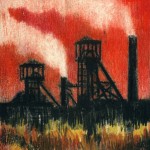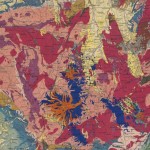First World War was such a traumatic experience for Otto Dix, (he served as a machine-gunner in the Western front from 1914 to 1918) that he later described a recurring nightmare:
“As a young man you don’t notice at all that you were, after all, badly affected. For years afterwards, at least ten years, I kept getting these dreams, in which I had to crawl through ruined houses, along passages I could hardly get through…”
Based upon his grisly memories, the fifty one etchings of Der Krieg (The War) were an unflinching account of the horrors and the perversity of war.










This cycle is a brutal representation of the body: dying, dead, mutilated, decomposing, resting on a landscape becoming lifeless. The technique used (acid etching a metal printing plate to heighten the sense of decay) is a further reminder of the corrosive nature of the artist’s experience.
Francisco de Goya‘s Los Desastres de la Guerra (The disasters of war) – [1746–1828] provided an obvious model for Der Krieg. Like Goya’s account of the barbarity of Napoleonic invasion and the Spanish War of Independence (1808-1814), Otto Dix exploited the possibility of a long sequence of images and a stark realism.










GH Hamilton describes Dix’s cycle as “perhaps the most powerful as well as the most unpleasant anti-war statements in modern art… It was truly this quality of unmitigated truth, truth to the most commonplace and vulgar experiences, as well as the ugly realities of psychological experience, that gave his work a strength and consistency attained by no other contemporary artist, not even by [George] Grosz…”
However, although this portfolio became a commonplace indictment against the horrors of war, one cannot deny Dix was equally horrified and fascinated by it.
In 1963 he explained why he volunteered for the Army:
“I had to experience how someone beside me suddenly falls over and is dead and the bullet has hit him squarely. I had to experience that quite directly. I wanted it. I’m therefore not a pacifist at all – or am I? Perhaps I was an inquisitive person. I had to see all that myself. I’m such a realist, you know, that I have to see everything with my own eyes in order to confirm that it’s like that. I have to experience all the ghastly, bottomless depths of life for myself…”
Nightmare and hallucinations pervade Der Krieg, as much as an addiction for the sensuousness and delight of the barbaric details.










Further material:
Education resource material: Beauty, Truth and Goodness in Dix’s War, by Roy Forward
Der Krieg‘s slideshow, in pdf format
The online Otto Dix project
Otto Dix The War, Moma
NGA’s Der Krieg
Otto Dix’s Der Krieg [War] cycle 1924 at the National Gallery Canberra
Monthly Stumblings # 6: Otto Dix, by Domingos Isabelinho
German Expressionism site at Moma

























THESE ARE AMAZINGGGGGGGGGGGGGGGGGGGGGGGGGGGGGGGGGGGGGGGGGGGGGGGGGGGGG
Now here we have a guy who has seen the elephant.
and the elephant bit him…..